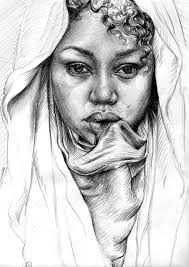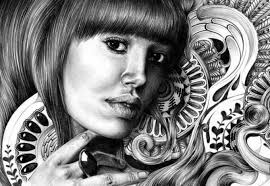Source:Google.com.pk
How To Do Pencil Drawings Biography
Ever seen a mall photobooth create a “pencil drawing” from a photo? Give us about one minute, and see how you can create an easy grayscale image effect that looks like a tonal pencil drawing. Check it out!
Automated software and Photoshop filters just try to awkwardly add pencil textures to your images. With some smart adjustments and an easy technique appropriate for beginners, you can turn some of your favorite photos into handsome, tonal, pencil art style images. Keep reading!
A concise description would be the story of your life as it relates to your art. Before you put pen to paper, or start typing, do some research, looking at other artist biographies for reference. You should notice that no two biographies are alike in form or content. Likewise, your biography should be very unique to your life experience and your personal style.
How is a biography different from a statement or resumé? Detailed information about your work should be reserved for your artist statement(s). Your biography should include important items from your resume, but it should not repeat your resume line for line.
Evaluate and write for your audience. You should have one general biography that will work in almost all circumstances. At least once a year, and before submitting your biography for an exhibit, article, etc., review and update it as necessary. Three to four paragraphs should be sufficient, and it should be no longer than one page. Write in the third person singular, not first. If incorporating personal statements, these should be quoted in first person.
The purpose of your artist biography is to make a human connection with your audience. If your audience knows more about the person behind the art, the buying experience will become more personal to them. Always keep your language positive. Negative words can turn people away. Use active over passive voice. Do not assume your readers will have the same knowledge as yourself. Provide exact names and locations, and avoid acronyms. Be honest, but avoid over-revealing personal details of your life. Keep it professional.
The following are some questions to consider when writing your own biography. Answers do not have to be provided for all of them.
As for form, start here. Describe your work. How would you describe your style or method? What mediums do you work in? What subjects? Do you have a statement about your work that you would like to share?
Next, add some compelling details. What made you decide to become an artist? Was there a specific event or a series of events you can describe?
Add in some historical timeline. Have you had any important people who have mentored or influenced your growth? How long have you been pursuing your art? Any notable education?








How To Do Pencil Drawings Biography
Ever seen a mall photobooth create a “pencil drawing” from a photo? Give us about one minute, and see how you can create an easy grayscale image effect that looks like a tonal pencil drawing. Check it out!
Automated software and Photoshop filters just try to awkwardly add pencil textures to your images. With some smart adjustments and an easy technique appropriate for beginners, you can turn some of your favorite photos into handsome, tonal, pencil art style images. Keep reading!
A concise description would be the story of your life as it relates to your art. Before you put pen to paper, or start typing, do some research, looking at other artist biographies for reference. You should notice that no two biographies are alike in form or content. Likewise, your biography should be very unique to your life experience and your personal style.
How is a biography different from a statement or resumé? Detailed information about your work should be reserved for your artist statement(s). Your biography should include important items from your resume, but it should not repeat your resume line for line.
Evaluate and write for your audience. You should have one general biography that will work in almost all circumstances. At least once a year, and before submitting your biography for an exhibit, article, etc., review and update it as necessary. Three to four paragraphs should be sufficient, and it should be no longer than one page. Write in the third person singular, not first. If incorporating personal statements, these should be quoted in first person.
The purpose of your artist biography is to make a human connection with your audience. If your audience knows more about the person behind the art, the buying experience will become more personal to them. Always keep your language positive. Negative words can turn people away. Use active over passive voice. Do not assume your readers will have the same knowledge as yourself. Provide exact names and locations, and avoid acronyms. Be honest, but avoid over-revealing personal details of your life. Keep it professional.
The following are some questions to consider when writing your own biography. Answers do not have to be provided for all of them.
As for form, start here. Describe your work. How would you describe your style or method? What mediums do you work in? What subjects? Do you have a statement about your work that you would like to share?
Next, add some compelling details. What made you decide to become an artist? Was there a specific event or a series of events you can describe?
Add in some historical timeline. Have you had any important people who have mentored or influenced your growth? How long have you been pursuing your art? Any notable education?
How To Do Pencil Drawings
How To Do Pencil Drawings
How To Do Pencil Drawings
How To Do Pencil Drawings
How To Do Pencil Drawings
How To Do Pencil Drawings
How To Do Pencil Drawings
How To Do Pencil Drawings
How To Do Pencil Drawings
How To Draw Step By Step Pencil Drawing Lessons
Pencil Drawing
No comments:
Post a Comment